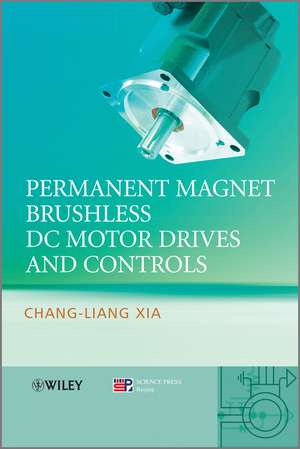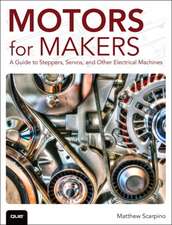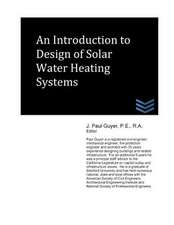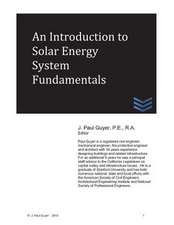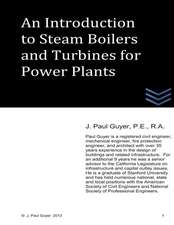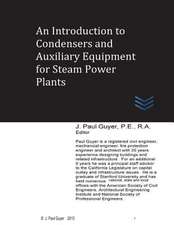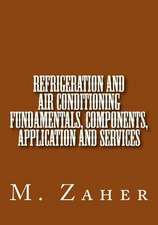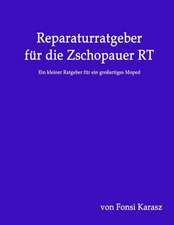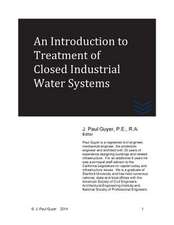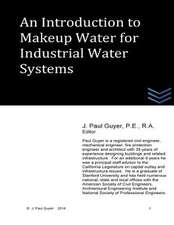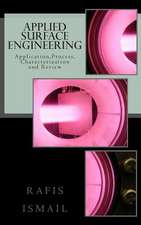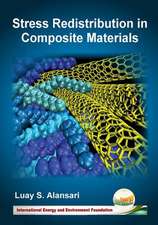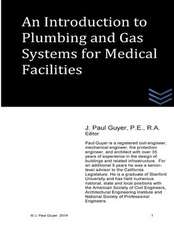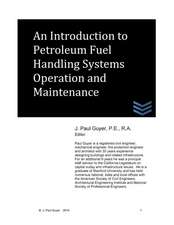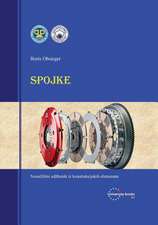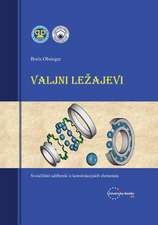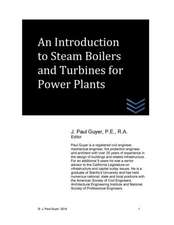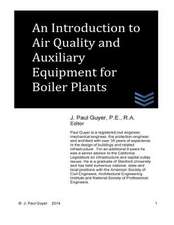Permanent Magnet Brushless DC Motor Drives and Controls
Autor C–L Xiaen Limba Engleză Hardback – 25 iun 2012
- Systematically guides readers through the subject, introducing basic operational principles before moving on to advanced control algorithms and implementations
- Covers special issues, such as sensorless control, intelligent control, torque ripple reduction and hardware implementation, which also have applications to other types of motors
- Includes presentation files with lecture notes and Matlab 7 coding on a companion website for the book
Preț: 1380.29 lei
Preț vechi: 1516.80 lei
-9% Nou
264.20€ • 287.08$ • 222.07£
Carte tipărită la comandă
Livrare economică 22 aprilie-06 mai
Specificații
ISBN-10: 1118188330
Pagini: 304
Dimensiuni: 151 x 252 x 22 mm
Greutate: 0.57 kg
Editura: Wiley
Locul publicării:Singapore, Singapore
Public țintă
Engineers directly involved in the control of BLDC motor drives, Designers. Electrical engineering teachers and students, Electrical technicians, Control engineersDescriere
In Permanent Magnet Brushless DC Motor Drives and Controls , Xia provides a thorough reference on the simulation and hardware implementation of brushless direct–current (BLDC) motor drives. Throughout the book, the author guides readers to a greater understanding the fundamental principles, modeling, design, and control of BLDC motor drives, while presenting advanced control methods of interest to more experienced readers. Given the advantages of the technology, permanent magnet BLDC motors are being used in an increasing number of applications, especially those requiring a high level of accuracy and performance. It is therefore a technology of rising importance for anybody working in motors and control.
- Focuses on control aspects, giving readers a thorough grounding in the topic
- Systematically guides readers through the subject, introducing basic operational principles before moving on to advanced control algorithms and implementations
- Covers special issues, such as sensorless control, intelligent control, torque ripple reduction and hardware implementation, which also have applications to other types of motors
- Provides MATLAB® 7 codes from the book s companion website
- Offers presentation files with lecture notes for instructors
This book is ideal for engineers and designers directly involved in the control of BLDC motor drives. Electrical engineering students, electrical technicians, and control engineers can also use this book as an introduction to key BLDC motor drive concepts.
Companion website for the book:
www.wiley.com/go/xia/dcmotor
Textul de pe ultima copertă
In Permanent Magnet Brushless DC Motor Drives and Controls , Xia provides a thorough reference on the simulation and hardware implementation of brushless direct–current (BLDC) motor drives. Throughout the book, the author guides readers to a greater understanding the fundamental principles, modeling, design, and control of BLDC motor drives, while presenting advanced control methods of interest to more experienced readers. Given the advantages of the technology, permanent magnet BLDC motors are being used in an increasing number of applications, especially those requiring a high level of accuracy and performance. It is therefore a technology of rising importance for anybody working in motors and control.
- Focuses on control aspects, giving readers a thorough grounding in the topic
- Systematically guides readers through the subject, introducing basic operational principles before moving on to advanced control algorithms and implementations
- Covers special issues, such as sensorless control, intelligent control, torque ripple reduction and hardware implementation, which also have applications to other types of motors
- Provides MATLAB® 7 codes from the book s companion website
- Offers presentation files with lecture notes for instructors
This book is ideal for engineers and designers directly involved in the control of BLDC motor drives. Electrical engineering students, electrical technicians, and control engineers can also use this book as an introduction to key BLDC motor drive concepts.
Companion website for the book:
www.wiley.com/go/xia/dcmotor
Cuprins
About the Author xi Preface xiii
List of Nomenclature xv
1 Introduction 1
1.1 History of BLDC Motors 1
1.2 Applications for BLDC Motors 3
1.2.1 Automotive BLDC Motor 4
1.2.2 BLDC Motor in Aerospace 5
1.2.3 BLDC Motor in Household Appliances 6
1.2.4 BLDC Motor in Office Automation 7
1.2.5 BLDC Motor in Other Industries 8
1.3 Advances in BLDC Motor Drives 8
1.3.1 Position–Sensorless Control 9
1.3.2 Torque–Ripple Reduction 10
1.3.3 Hardware Implementation 12
1.4 Future of BLDC Motor Drives 15
1.4.1 Impacts of Power Electronics and Microprocessors on BLDC Motor 15
1.4.2 Permanent Magnet and Design Considerations 17
1.4.3 New Types of BLDC Motor 18
1.4.4 Applications of Advanced Control Strategies 20
1.5 Other Kinds of PM Motors 20
Questions 21
References 21
2 Mathematical Model and Characteristics Analysis of the BLDC Motor 25
2.1 Structure and Drive Modes 25
2.1.1 Basic Structure 25
2.1.2 General Design Method 28
2.1.3 Drive Modes 28
2.2 Mathematical Model 33
2.2.1 Differential Equations 33
2.2.2 Transfer Functions 40
2.2.3 State–Space Equations 45
2.3 Characteristics Analysis 47
2.3.1 Starting Characteristics 47
2.3.2 Steady–State Operation 48
2.3.3 Dynamic Characteristics 52
2.3.4 Load Matching 56
2.3.5 Commutation Transients 58
Questions 62
References 62
3 Simulation for BLDC Motor Drives 63
3.1 S–Function Simulation 63
3.2 Graphical Simulation 69
3.2.1 Simulation of Double Closed–Loop Speed–Control System 72
3.2.2 Advanced Conduction of Phase Current for BLDC Motor Control 76
Questions 82
References 82
4 Speed Control for BLDC Motor Drives 83
4.1 Introduction 83
4.1.1 PID Control Principle 83
4.1.2 Antiwindup Controller 86
4.1.3 Intelligent Controller 88
4.1.4 Representations of Uncertainty 89
4.2 Advanced Speed Control for BLDC Motor Drives 90
4.2.1 Fuzzy Control 90
4.2.2 Neural–Network Control 94
4.2.3 Genetic Algorithm Optimization Control 102
4.2.4 Sliding–Mode Variable Structure Control 107
4.2.5 Grey Control 113
4.2.6 Other Intelligent Control Strategies 117
4.3 Influences of Machine Parameters on Dynamic Response and Speed Range 119
4.3.1 Armature Resistance 119
4.3.2 Armature Inductance 120
4.3.3 Rotor Inertia 122
4.4 Practical Issues on Implementation 123
4.4.1 Type of Power Switches and Circuit Forms 123
4.4.2 Detection of Rotor Position 123
4.4.3 Braking Circuit and Protection Circuit 123
4.4.4 Antidisturbance Measures of Software and Hardware 124
Questions 124
References 124
5 Analysis and Reduction of Torque Ripple 127
5.1 Cogging Torque–Ripple–Minimization Techniques Analysis 127
5.1.1 Skewing Slots and Magnets 129
5.1.2 Embedding Magnetic Slot Wedges 130
5.1.3 Auxiliary Slots and Teeth 130
5.1.4 Fractional Number of Slots Per Pole 130
5.2 Torque–Ripple Reduction with Time–Sharing Commutation Strategy 131
5.2.1 Time–Sharing Commutation Strategy 131
5.2.2 Analysis of Time–Sharing Commutation Strategy 140
5.2.3 Optimal Time–Sharing Commutation 144
5.3 Torque–Ripple Reduction with Active Disturbance Rejection Control 146
5.3.1 Principles of ADRC 146
5.3.2 ADRC Controller Design 147
5.3.3 Experimental Results 150
5.4 Torque–Ripple Reduction with BP Neutral Network 152
5.4.1 BP Neural Network 152
5.4.2 Self–Tuning Regulator 155
5.4.3 Experimental Results 155
5.5 Motor Optimization and Torque–Ripple Minimization with Fuzzy Niche Genetic Algorithm 157
5.5.1 Platform–Width Calculation of Back–EMF Waveform 158
5.5.2 Fuzzy Niche Genetic Algorithm 161
5.5.3 Optimization Design of BLDC Motors 163
Questions 165
References 165
6 Sensorless Control for BLDC Motor Drives 167
6.1 Principle of Sensorless Position Detection 167
6.1.1 Back–EMF–Based Method 168
6.1.2 Flux–Linkage–Based Method 178
6.1.3 Inductance–Based Method 179
6.1.4 Intelligence–Based Method 180
6.2 Sensorless Control Strategy 181
6.2.1 Sensorless Control Based on Disturbance Observer 181
6.2.2 Sensorless Control Based on a Kalman Filter 187
6.2.3 Sensorless Control Based on Sliding–Mode Observer 191
6.2.4 Position–Sensorless Control Using Wavelet Neural Network (WNN) 196
6.3 Starting Process for Sensorless Control 200
6.3.1 Determination of Initial Rotor Position at Standstill 200
6.3.2 Starting Methods for Sensorless Control 201
Questions 206
References 206
7 Realization of BLDC Motor Drives 209
7.1 Main Circuit 209
7.2 Driving Circuit 212
7.2.1 MOSFET Driving Circuit 212
7.2.2 IGBT Driving Circuit 215
7.2.3 Intelligent Power Module (IPM) 215
7.3 Rotor–Position Sensor Circuit 216
7.4 Microprocessor Control Circuit 218
7.4.1 Introduction 218
7.4.2 MCU Control Circuit 220
7.4.3 DSP Control Circuit 223
7.5 Protecting Circuit 224
7.5.1 Overvoltage Protection 224
7.5.2 Overcurrent Protection 229
7.5.3 Logic Protection 229
7.5.4 Other Protection Circuits 230
7.6 Sensorless Control Circuits 232
7.6.1 Voltage Detection 232
7.6.2 Filtering and Phase Shifting 234
7.6.3 Current Detection 236
7.7 ASIC for BLDC Motor Drives 238
7.7.1 MC33033 238
7.7.2 TB6537P 240
7.8 Software Design 246
7.8.1 BLDC Motor Driving with Position Sensor 246
7.8.2 BLDC Motor Driving Without Position Sensor 247
7.8.3 Reliability 248
7.9 EMC Design 250
7.9.1 EMC Design of High–Voltage Part 250
7.9.2 EMC Design of Low–Voltage Part 251
Questions 253
References 253
8 Applications of BLDC Motor Drives 255
8.1 Elevator–Door Control System 255
8.1.1 Introduction 255
8.1.2 Hardware Design 259
8.1.3 Software Design 261
8.2 Elevator Traction Machine System 265
8.2.1 Introduction 265
8.2.2 Characteristics of a BLDC Motor Gearless Elevator Traction Machine 266
8.2.3 The Technical Requirements of the Elevator Traction Machine 267
8.2.4 Hardware Design 268
8.2.5 Software Design 269
8.3 Inverter Air Conditioner 270
8.3.1 Control Function of Indoor Controller 271
8.3.2 Control Function of Outdoor Controller 271
8.4 Electric Vehicles 272
8.4.1 Pure Electric Vehicles 272
8.4.2 Hybrid Electric Vehicles 273
8.5 Electric Bicycles 274
8.6 Others 275
8.6.1 The Applications in the Fan and Pump 275
8.6.2 The Application in the Washing Machine 276
8.6.3 The Application in Medical Instrumentation 277
Questions 277
References 277
Index 279
